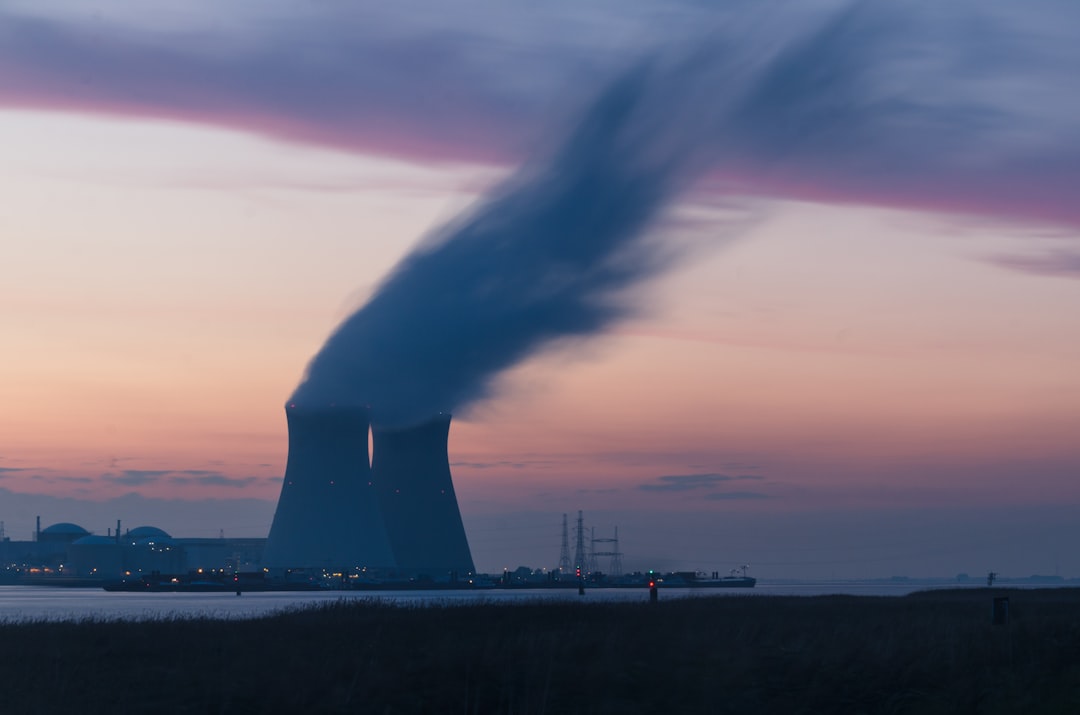I'm Radioactive, Radioactive

Here's a quick question: Where was the first nuclear fission plant on Earth located? Who built it and oversaw its working?
Pfft. Is this is a fifth-grade pop quiz? We all know that one. It was made by Enrico Fermi and his associates at the University of Chicago.
Wrong.

OK, then was it probably the warring Germans during the World War or someone from the Soviet Union, right?
Wrong again.
If you thought nature only knew about lasers, you thought wrong. The first-ever nuclear reactor lay in Gabon, a tiny country in Africa. Moreover, it wasn't manufactured by a despotic megalomaniac or a deranged physicist that tried to murder his professor with a poisoned apple.
No, it was a creation of Mother Nature.

But we're getting ahead of ourselves. To understand this story in its entirety, we need to take a step back — to May 1972.
Francis Perrin, a French nuclear physicist, sat in his room, scratching his head about the fresh news that the radioactive uranium core at Oklo has a lower than usual concentration. The accepted convention for the concentration is 0.72%, but the concentration at Oklo was 0.717%. You may think that this is a tiny amount but bear in mind from the mass-energy equivalence that this could mean a lot of energy. Like, a real lot.
After hours of work, Perrin decided that there could be only one explanation — Around 1.7 billion years ago, a self-sustaining nuclear reaction occurred.
I'm waking up to ash and dust...
But how did he come to the conclusion that giant explosions (well technically "releases of energy") were a thing before humans started messing around with science? Well, he had evidence.
At the site of the supposed nuclear reaction, fissile uranium-235 (the kind that makes nuclear reactions work) was present in 3% of the natural ore, which is considered to be abundant. Most of the current nuclear reactors in the world also enrich their fuel to roughly this ratio (given certain financial constraints). So the uranium at the site definitely was enough to reach critical mass at the time.
But does the presence of a fissile isotope guarantee a nuclear reaction? No, we need more concrete evidence.
I wipe my brow and I sweat my rust...
The next factor for a controlled nuclear reaction is the moderator. Without a moderator to calm down the super energetic neutrons spewed out of the reaction, it would not be a controlled fission reaction. In fact, no reaction would happen in the first place.
Fortunately, Oklo is an open-pit mine that's inundated with water, which would have served the job just as well as the heavy water used in nuclear reactors today.
However, the fission reaction was not continuous, as the water in the pit would boil off and stop the reaction. When it cools and condenses, the reaction restarted. This cyclic process took around 3 hours.

I'm breathing in the chemicals...
But wait a minute, how do we know how all this happened (In about the same time it takes to watch a Hollywood blockbuster, if I may add)?
One way to prove this is to look for products and their signatures. Here's what we (as in, us humans) found:
- Xenon, a fission product of this nuclear reaction, has five isotopes as products. All five isotopes were found in the rock formations of the pit mine.
- Neodymium, a lanthanide, is one of the products of nuclear fission of uranium-235. A variety of its isotopes were found in the region, and their percentage composition at Oklo was determined.
The researchers then did some math-ing around and observed that the graph of fission product signatures at Oklo was almost an exact match with existing charts from a nuclear reactor.

One thing to note, though, is that corrections were made to account for the natural occurrence of neodymium at Oklo. Notice the complete absence of Nd-142 and comparably higher than the natural composition of Nd-143.
I feel it in my bones, enough to make my systems blow...
The uranium deposit in the reactor was by no means small. A whopping five tons of uranium underwent fission at this location. Yeah, that's a big boom, I know.
The uranium present in crevices in the mine varied in size from mere centimeters to around five meters. The fission of just a single atom of uranium-235 provides approximately 200 million electron volts of energy.
If you do the math, you'll find that the energy produced by the Oklo reactor is a staggering $8.2 \times 10^{16} J$. That's more than the amount of energy produced by a million Little Boys, the atomic bomb dropped on Hiroshima.

I raise my flags, don my clothes, it's a revolution I suppose...
But what does this mean to you? Why should you care if some ancient pit mine in a random corner of the world had a nuclear reaction long before the first humans popped up and started beating up each other with stone clubs?
The answer lies in the hidden secrets of the Oklo reactor. Despite not having the safety measures of today's reactors, the Oklo reactor never underwent a meltdown or an explosion.
The open-pit mine was narrow, yet locked nearly all products in its veins. The products were not scattered across the region and remained in a relatively confined space. Though there was nothing then to feel its effects if it did explode, it still provides a good lesson in safety to today's reactors. The water regulated the reaction extremely efficiently and ensured that the plant didn't go supercritical.
We'll paint it red to fit right in...
Now, how did our Oklo reactor handle the nasty stuff that comes with the word "nuclear"?
Cesium, a dangerous by-product of the nuclear reaction, was found to be captured by Ruthenium.
Other by-products of the reaction include radioactive gases krypton and xenon. These were found to be absorbed by aluminum phosphate minerals. The grains of these minerals can contain these gases for billions of years.
All systems go, sun hasn't died...
The KBS-3 method by SKB, a Swedish Nuclear Waste Management company, takes inspiration from the mine at Oklo. The spent fuel will be locked into copper canisters with iron inserts, which will be placed within Bentonite clay, an absorbent aluminum phyllosilicate clay similar to the aluminates found at Oklo.
The clay will prevent the fuel from contaminating water or seeping into the rock. It will also avoid damage to the copper canister from corrosion. This setup is placed deep into the Swedish bedrock. The SKB estimated that it will remain isolated from the rest of the world for around 100,000 years.

Deep in my bones, straight from inside...
For all physics folks reading this who think that the Oklo reactor has nothing in store for me, here's a fun little fact: the Oklo reactor may be relevant to our understanding of the atomic fine structure constant, $\alpha$.
$\alpha$ characterizes the strength of electromagnetic interaction between elementary charged particles. There was a hypothesis that this value might have changed over time. This is because $\alpha$ influences the rate of various nuclear reactions.
Here's where things get interesting: Sm-149 captures a neutron to become Sm-150. The rate of neutron capture of nuclear processes depends on the value of $\alpha$. If the ratio of the two samarium isotopes in Oklo is found, it can be used to calculate the value of the fine structure constant 2 billion years ago.
By analyzing the relative concentrations of the isotopes, researchers found that the nuclear reactions of the past were almost the same they are today. This further implies that $\alpha$ hasn't changed either. Interesting indeed.
Whoa, oh, oh, oh, I'm radioactive, radioactive…
This blast from the past is a fascinating insight about the nature (pun intended) of nuclear reactions.
A lot of valuable research has been slowed down by a general misconception of radioactivity. A lot of people think that it is an unstoppable force of evil and must be totally shunned. The public, in general, is not clear about nuclear.
MRI scanners, for example, were initially called NMRI (short for Nuclear Magnetic Resonance Imaging). The N was dropped to prevent the public phobia from going out of hand. While some nuclear programs are indeed questionable, this is not the case everywhere. Regardless, the progress of science has been slowed down by exaggerating the fear of the negative effects.
But this topic has already been explored extensively, so we'll leave it to the experts to handle the rest.
While tampering with atoms is dangerous, if we know how to do it properly and responsibly, like the Oklo reactor, we'll be just fine, man.
